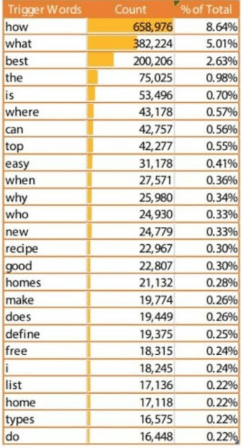Technological Trends and Demographics in Voice Search
While statistics show that young people still perform a larger portion of their web searches through typing than their older counterparts, to some degree the statistics are skewed. For one thing, older folks who have limited eyesight or difficulty typing–whether due to physical disability or from having grown up at a time when typing was principally performed by secretaries–are more likely to resort to voice search than most young people are. On mobile devices, the young are far more adept at two-thumbed typing than older folks. But trends show that the younger demographics are liable to use voice searches in a wider variety of ways than older people, and as voice search becomes better, a greater proportion of all searches are liable to be conducted by voice. Already well over a third of Google searches are conducted by voice, and the percentage is rising.
As one would expect, the highest percentages of voice searches overall are found in cases where it makes the most sense to search hands free–for telephone numbers and directions, particularly while driving. But as the cost of voice activated assistant devices, such as Google Home devices, Amazon’s Echo devices, and those using Apple’s Siri drop, they will be found in more and more homes and other places. Also, as voice recognition, text-to-voice translation, voice-to-text translation, inter-language translation, and as the inferential capabilities of the search engines improve, a growing proportion of not only web searching, but of web consuming will be conducted audibly.
Demographically, the greying of the American population also pushes in the direction of voice-activated information services. People with limited mobility, limited ability to type, and limited eyesight find it easier to access information through voice-activated devices. At-risk people in higher age brackets have also found it harder to access goods and services during the COVID pandemic, and have been learning, to their pain, that internet access to goods and services is no longer a convenience, but a necessity.
Possible Accessibility Liability Issues
As internet access becomes less regarded as a convenience and more as a necessity, access to goods and services provided through the internet becomes more likely to become viewed as a civil rights issue. And that means that, as the flip-side of companies taking advantage of the opportunities presented by an internet presence, accessibility is liable to become a legal requirement in time, just as wheelchair accessibility has in many brick and mortar settings. It’s best to start thinking ahead and forging the groundwork as much as possible. There’s also a chance, if not a likelihood, that Google in particular will start to get a bit militant about ‘nudging’ websites in this direction.
For the moment, though, the important thing is to make your site as accessible to various kinds of voice search as possible. That will put you in the best position today, and where it will be easier to respond to the next associated marketing challenges.
Voice Search and General SEO
As compared with generalized SEO, voice search is more liable to be directed at local businesses. This makes sense. When someone wants to filter through a large quantity of information, such as a nationwide or worldwide search is liable to provide, it pays to be able to skim. Voice-search inference engines understand this, and lean towards local goods and services suppliers.
Searchers have become accustomed to dropping keywords into search bars when they type, but voice searches are liable to be semantically phrased as questions or requests. Twenty percent of voice searches are triggered by just 25 key words.
Google’s RankBrain and Hummingbird technologies are designed to take these semantic queries and respond to them making inferences about what voice queries are liable actually to be looking for. SEO needs to account for the difference in this kind of query. It used to be that Siri might say, “I’ve found something about that” and throw something up on the screen, but increasingly information consumers are wanting to have pertinent results actually recited to them, and that means that SEO has to be responsive in order to get better SERP positioning.

Voice-Driven eCommerce
Finally, as the movement towards voice-driven information continues, voice integration with back-end eCommerce becomes more important. Obviously, voice shopping is best integrated at present on Amazon, but current trends suggest that it is liable to undergo huge growth in the near future. Obviously, voice ordering of goods and services comes with its own challenges, including security, but it’s time to start considering voice-assisted shopping as part of your eCommerce strategy.
All of that sounds a little complicated, and maybe it is a little complicated. But voice-search optimization is here to stay, and if you haven’t yet made it a part of your SEO strategy, it’s time to do so. The helpful and knowledgeable experts at SunAnt can get you pointed in the right direction.









